Our understanding of habitability relies entirely on the availability of liquid water. All life on Earth needs it, and there’s every indication that life elsewhere needs it, too.
Can planets with frozen surfaces somehow have enough water to sustain life?
Terrestrial planets that lie outside their star’s habitable zone are largely dismissed when choosing targets for further study. But a new paper published in Nature shows how water might exist, and persist, on these cold exo-Earths. On planets with ice sheets, there could be enough heat to create a persistent layer of liquid water under the ice or trapped between layers of ice.
The paper is “Liquid water on cold exo-Earths via basal melting of ice sheets.” The lead author is Lujendra Ojha, an assistant professor of Planetary Science in the Earth and Planetary Sciences Department at Rutgers University.
Instead of heat coming from the star and accumulating in the atmosphere via the greenhouse effect, the heat to melt ice on exo-Earths would come from the planet itself. Atmospheric pressure and composition are necessary factors in surface liquid water. But basal melting could produce liquid water without a strong dependence on their atmospheres for planets outside the habitable zone. “On such cold, icy exo-Earths, basal melting of regional/global ice sheets by geothermal heat provides an alternative means of forming liquid water,” the paper states.
The term basal melting describes “… any situation where the local geothermal heat flux and any frictional heat produced by glacial sliding are sufficient to raise the temperature at the base of an ice sheet to its melting point,” according to Ojha.
Ice-sheet dynamics on Earth describe how massive ice sheets on Greenland and Antarctica behave. These ice sheets move as Earth’s gravity pulls on them. The ice’s temperature and strength determine how much basal melt occurs, along with other factors. The same factors govern basal melting on exo-Earths.
Water is the primary ingredient for life. But there are other requirements, too. The water has to persist and contact rock so that geochemistry can play its role. The authors say that basal melting on icy exo-Earths can provide both.
“Furthermore, subglacial oceans may persist on exo-Earths for a prolonged period due to the billion-year half-lives of heat-producing elements responsible for geothermal heat,” they write. They also point out that even weak geothermal flow like that produced on the Moon could provide enough heat.
The water in these oceans interacts with rock and is also protected from radiation. These are both critical factors for life. “These subglacial oceans, often in contact with the planet’s crust and shielded from the high energy radiation of their parent star by thick ice layers, may provide habitable conditions for an extended period.”
On frozen super-Earths, the gravity is much stronger, creating a complex situation. “Due to the high surface gravity of super-Earths, ice sheets may undergo numerous phase transformations,” the authors write. The phase transformations refer to ices with different densities due to different packing geometries. Water ice can form 18 phases when exposed to higher pressures and different temperatures, and they can create layers that trap water between them.
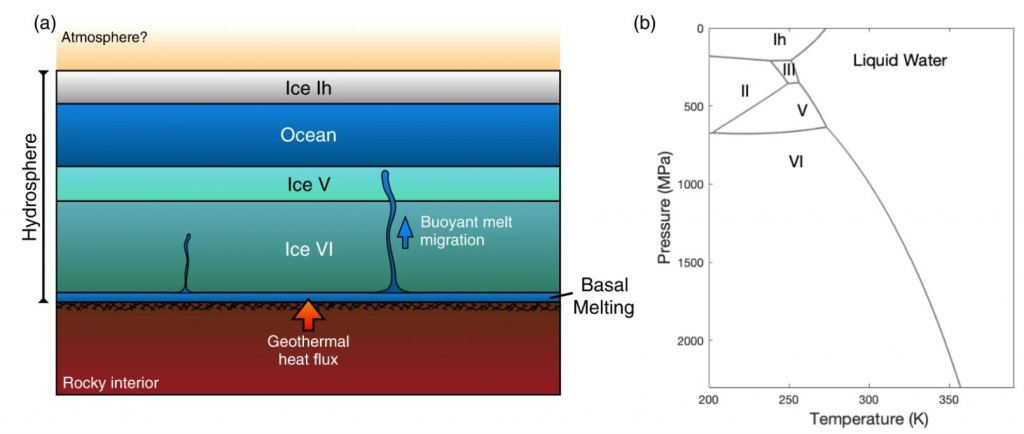
These results are especially relevant regarding exo-Earths that orbit M-dwarf stars (red dwarfs.) About 75% of the stars in the Milky Way are M-dwarfs, and scientists think that over 40% of them host Earth-sized exoplanets in the habitable zones. But M-dwarfs are much different than stars like our Sun, and there’s ongoing scientific debate on how habitable M-dwarf planets might be.
Though M-dwarfs are smaller and less luminous than the Sun, more of their luminosity is in the form of high-energy UV and X-ray radiation. So while their habitable zone is based on their ability to warm a planet enough to create liquid water, that same habitable zone might be a region of intense, life-disrupting energy. Biological tissues can’t withstand strong UV and X-ray exposure. Adding to that is the propensity for M-dwarfs to flare violently, which could strip away atmospheres and render planetary surfaces sterile.

Astronomers think that large numbers of planets around M-dwarfs, even if they are in the habitable zone, are tidally-locked to their stars. This creates a stellar eyeball situation, where the fraction of a planet that faces its star is warm enough for liquid water but too highly irradiated for life. Ice would cover the rest of the planet.
But if the authors are correct, none of that might matter if life can gain a foothold under the ice on cold exo-Earths orbiting red dwarfs. Even if the planet is tidally-locked, a large portion of the planet could still be covered by an ice sheet. Due to ice-sheet drift, ice could cover the entire world, even the part facing the star. At that point, the planet would compare well with icy moons in our Solar System, like Europa and Ganymede, except those moons are kept warm by tidal flexing rather than basal melt. These moons have subsurface oceans sheltered from radiation by their thick ice shells and are primary targets in the search for life.
There’s precedent for subsurface oceans on icy exo-Earths in Earth’s history. During global glaciation events, or “Snowball Earth” episodes during Earth’s icehouse climates, the Earth may have been entirely covered in ice. But geothermal heat flow meant that only the surface of the oceans froze solid. Abundant liquid water existed under the ice, and life persisted.
Basal melting may have been a part of Mars’ history, too. It may have helped Mars stay habitable during the Solar System’s faint young Sun phase and may maintain a subglacial lake on the planet’s south pole to this day, though that’s highly controversial.
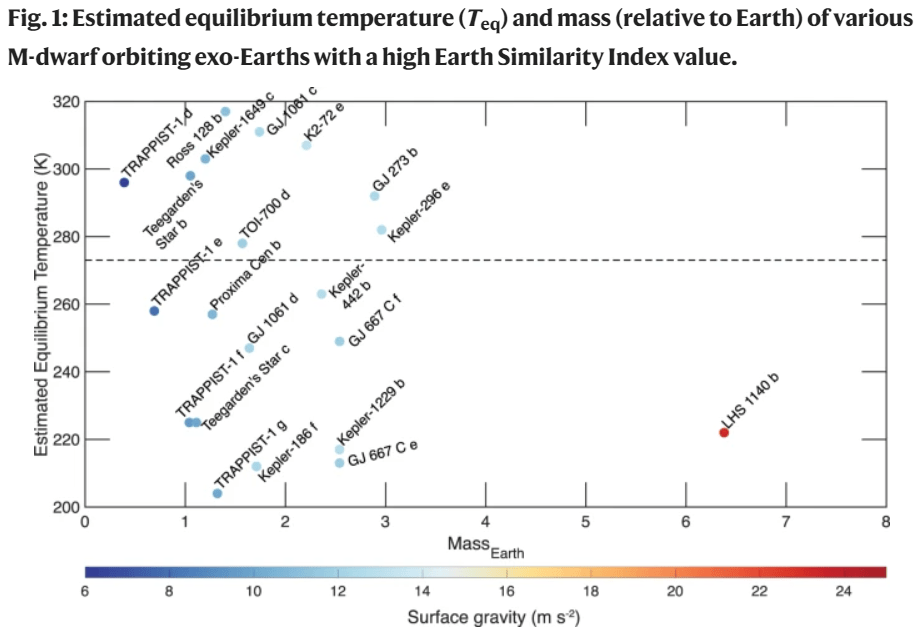
Basal melting on exo-Earths is a complex topic, made difficult by the lack of detailed data. But several factors will play into basal melting, including gravity, ice thickness, and temperature. The researchers modelled heat flow based on gravity and surface temperature for 1 km thick ice sheets. The models showed that, unsurprisingly, Exo-Earths with high surface temperatures (Ts) require less geothermal heat to induce basal melting than planets with lower surface temperatures.
Proxima Centauri b, our Solar System’s nearest exoplanet neighbour, makes a good case study.
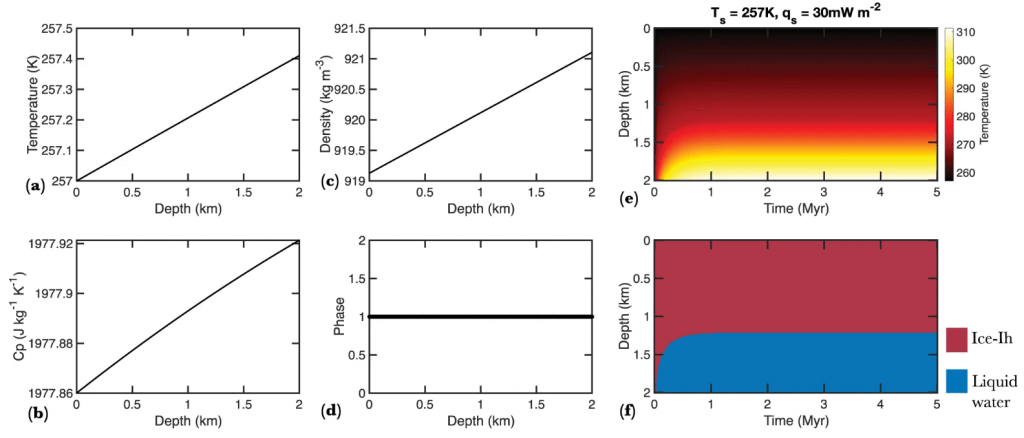
But Proxima Centauri b is a small planet, maybe only a little more massive than Earth. Many of the exo-Earths around red dwarfs are super-Earths with more powerful gravity. Some of those planets could also have ice sheets much thicker than 2 km, maybe even as thick as 75 km. We don’t know. How would basal melting under ice sheets work on those worlds?
The researchers used the exoplanet LHS 1140 b as a case study for those more extreme conditions. It’s a super-Earth seven times more massive than Earth with a radius 60% larger than Earth. It has a surface gravity almost 2.5 times stronger than Earth’s and orbits a red dwarf about 40 light-years away.
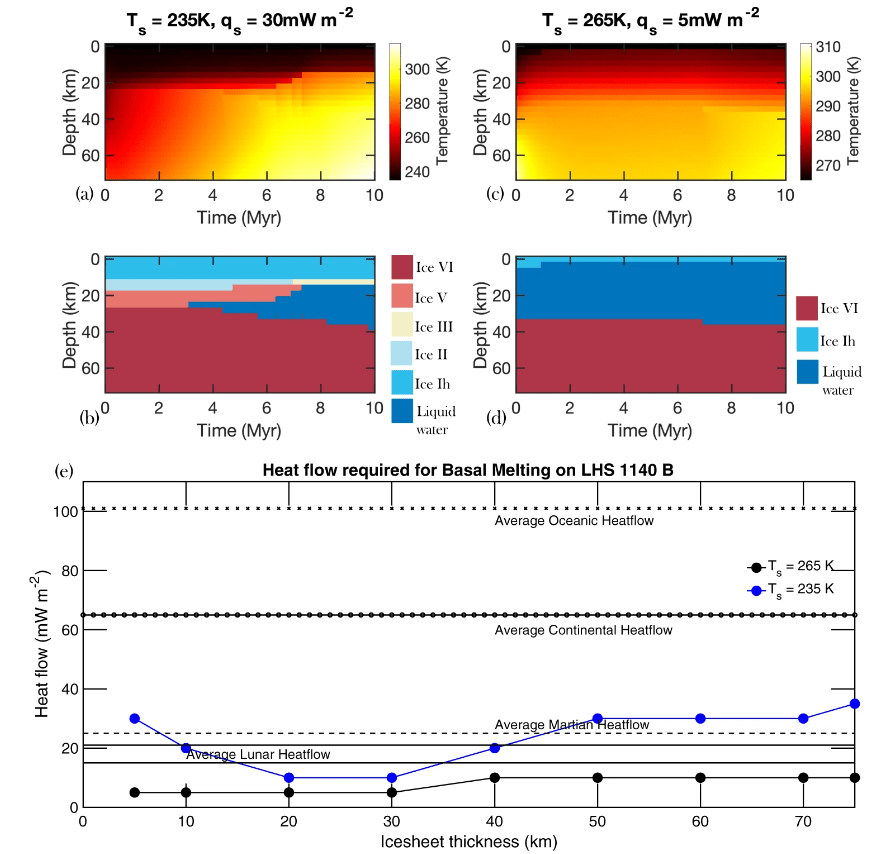
There are a lot of variables in this kind of research, but there’s also precedent for basal melting. There’s no reason to exclude the possibility of basal melting creating habitable regions on icy exo-Earths.
In fact, the authors say that basal melting could occur with relative ease. There’s no magic to it.
“The primary goal of this paper is to demonstrate the relative ease by which basal melting may be attainable on M-dwarf orbiting exo-Earths,” they write in the paper’s conclusion. Even though there are so many uncertainties about ice sheet thickness, heat transfer, and other factors, those uncertainties aren’t discouraging because there are so many exoplanets.
“… if even a handful of potentially habitable exo-Earths discovered so far (or in the future) were to contain thick (>few km) hydrospheres, then liquid water via basal melting may be present on those bodies with relatively modest heat flow,” they write.
It’s hard to know for sure from such great distances. But look at Earth’s history.
Would distant alien astronomers who observed Earth during its icehouse phases have wondered if life could somehow persist here due to basal melting? Would they be certain Earth is in the habitable zone? Our planet could face another Snowball Earth episode depending on how Earth’s continents drift in the future. If they’re still watching, could they imagine that a global civilization could emerge from the frigid conditions and flourish between the planet’s cryogenic periods?

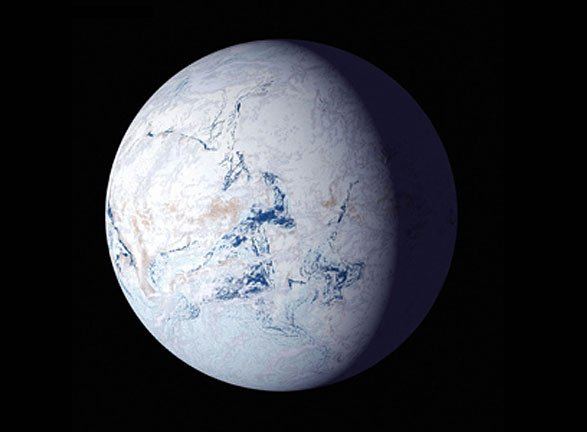
Frankly I’d be surprised if we DIDN’T eventually find life in abundance in the oceans of Europa. All you need is water, carbon compounds, and sources of energy (thermal vents would do perfectly). Life would just spring from there.